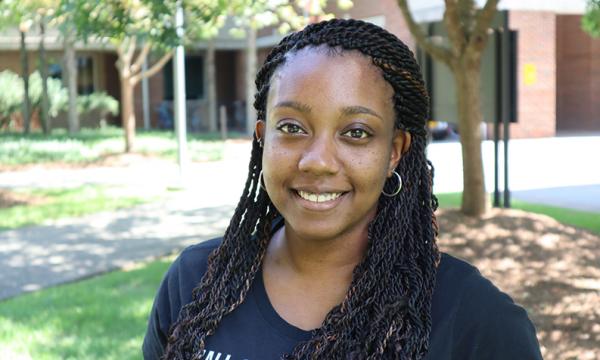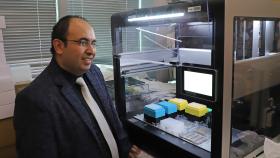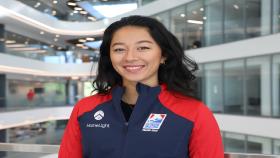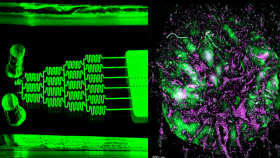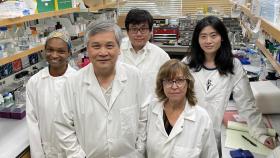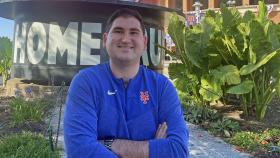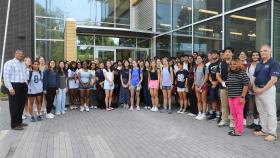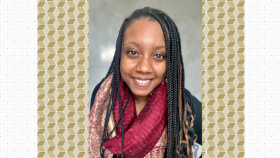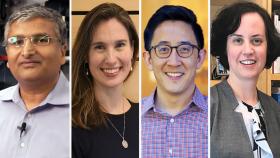Simone Douglas, a 5th year Ph.D. candidate in the Wallace H. Coulter Department of Biomedical Engineering at Georgia Tech and Emory University, is researching sickle cell disease and microvessels in the tissue remodeling, repair and regeneration lab of Manu Platt, Ph.D.
To learn more about her as she nears the completion of her degree, we presented Douglas with a series of questions:
Where is your hometown?
My hometown is South Florida. I was born in Coral Springs, FL.
Undergraduate degree?
University of Miami, BSBME ‘15
What lab are you in?
“I am in the Platt Lab and my PI is Dr. Manu Platt! Dr. Platt is a fantastic PI. I consider him an advisor, mentor, and one of my biggest advocates. In the past few years, I have grown as a researcher, becoming more confident in myself and what I am capable of. Dr. Platt pushes me, always seeing the potential in me before I see it, and because of that, I have had many opportunities to help me grow professionally. We have a great lab culture and environment, which I believe is an extension of Dr. Platt and his contagious personality.”
What led you to pursue a Ph.D.?
“I love watching Grey’s Anatomy. I wanted to be the next Dr. Miranda Bailey. As an undergraduate, I chose to study biomedical engineering (BME) on pre-med track, but realized I was more in love with the idea of being a doctor than the career itself. Through undergraduate research and outreach with the Society of Women Engineers (SWE), I realized that I liked engineering, research/working in a lab, mentoring and teaching – all things I saw my undergraduate research mentor doing every day. I wanted her job and to be a professor in the academy, and run my own research group! This led me to applying for Ph.D. programs – so I’m still going to be a doctor, just not ‘that type of doctor’ and I’m very excited to see where my career takes me!”
What are you researching?
“I am studying how cathepsins can ‘make’ and ‘break’ fibrin with applications in pathophysiology and tissue engineering. My thesis is multidisciplinary; part of it focuses on studying abnormal blood clotting mechanisms in sickle cell disease and the other is studying destabilization and longevity of engineered microvessels. These might seem unrelated, but the common theme behind them is fibrin, an essential blood clotting protein and commonly used biomaterial scaffold for tissue repair, and cysteine cathepsins, some of the most powerful proteases in our bodies.
“I love my lab and the work I do! Our work with sickle cell disease takes us into the community; every year we raise money and participate in the Sickle Cell Foundation of Georgia’s annual Sickle Cell Road Race/Walk. It’s easy to get caught up in day to day bench work, but going out to events like this allows us to interact with families whose lives are affected daily by the disease. Science activism is something Dr. Platt emphasizes; as a researcher it’s my responsibility to be an advocate for public health issues. I have a platform to amplify the voices of others to raise awareness about sickle cell disease, including research and funding disparities.”
What do you hope to do when you graduate?
“Currently, I am looking for a post-doctoral position/fellowship. I want to stay in the field of cardiovascular tissue engineering, and hopefully do some more designing of biomaterials/tissue engineered constructs. Eventually, I want to be a professor of biomedical engineering and run my own lab focused on bridging engineering and physiology principles for therapeutic applications in cardiovascular complications/diseases that affect women and African Americans – two groups marginalized in medical research.”
Do you have any other news to share?
“While at Georgia Tech, together with my lab mate, Akia Parks, we co-founded a new student organization in the BME department called the Biomedical Engineering Alliance for Minorities (BEAM). Akia recognized the need for a space where underrepresented minority (URM) students in the department can come together and create a network of support for each other. There were few of us in the department, and the few that were here, were not making it through the program. She organized the initial meet-up one evening, and from that, started a mentoring program. A couple of months later, I joined BME’s Community, Diversity, and Inclusion (CD&I) committee, serving on the ‘recruitment and retention’ subgroup and saw the opportunity to turn the mentoring program into an organization. We submitted a proposal to CD&I, solidifying our goal: ‘The Biomedical Engineering Alliance for Minorities (BEAM) aims to create a support system that fosters an affirming community for underrepresented minority BME graduate students to help them thrive and successfully matriculate through the BME graduate program.’
“Within a year, we held the first URM breakfast for graduate students during orientation and had the first URM affinity group meet-up at recruitment. With the support of graduate students, and faculty/staff on the graduate admissions and recruitment committees, as a top ranked BME program, we are leading with the number of URMs in our graduate program – the number of Black and Latino students has doubled since I started! With an organization like BEAM, we have the infrastructure to help support URMs as they complete their Ph.D.’s
“As a Georgia Tech Diversity and Inclusion fellow, my project is starting BEAM for undergraduates (U-BEAM). It’s been enlightening serving in an advisory role for them; the undergraduates I am working with are motivated and eager to make an impact for URMs in the department. And I know there are plans for the undergraduate and graduate students to do some events together with opportunities for mentorship between them. Very excited to see that!
“BEAM recently became a chartered organization at Georgia Tech and is now officially in its 2nd year. The new leadership team has a great group of students who are committed to continuing to build BEAM into a strong organization. BEAM is working intentionally to improve URM retention and recruitment, by developing and building a network that supports and values racial and ethnic diversity in our department. The seeds have been planted and I can’t wait to see where BEAM goes in the future!”
Media Contact
Walter Rich
Keywords
Latest BME News
Coskun pioneering new research area and building a company around iseqPLA technology
BME researcher Ankur Singh using new technology to uncover weakened response in cancer patients
Research team led by BME's Cheng Zhu probes the underlying mechanisms of PD-1 checkpoint inhibitor therapy
Georgia Tech grad reflects on his rookie season as a biomechanics engineer with the New York Mets
First-year students learned about the resources and support they could access during their college journey in BME.
BME assistant professor using Sloan Scholars Mentoring Network seed grant to support her lab's work
Coulter Department honors Jaydev Desai, Melissa Kemp, Gabe Kwong, and Johnna Temenoff

